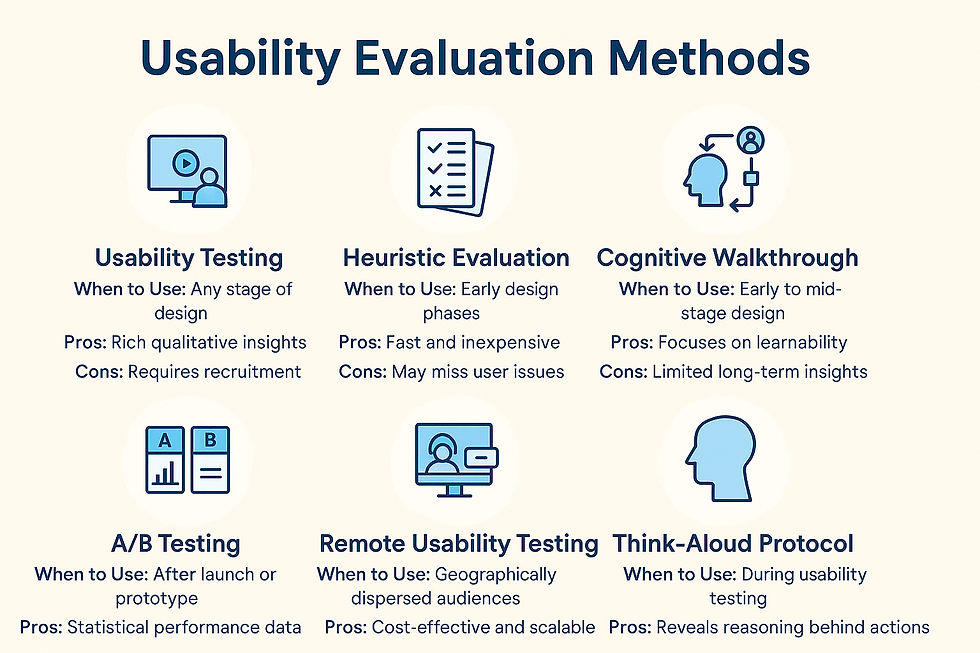What Makes a Great UX Research Test Plan
- Philip Burgess
- Aug 10
- 2 min read
Updated: Aug 16
By Philip Burgess – UX Research Leader
A UX research test plan isn’t just a document—it’s the blueprint for how you’ll uncover insights that drive design and business decisions. Done well, it aligns stakeholders, keeps your study focused, and ensures that results are actionable. Done poorly, it leads to confusion, wasted effort, and inconclusive findings.
After 20 years in UX research, I’ve found that the best test plans have several key components that work together to ensure a study’s success.
1. A Clear, Concise Purpose Statement
Why it matters: Everyone involved should understand why the study exists and what you hope to learn. What to include:
The problem or opportunity driving the research
The specific questions you want answered
How the results will be used
2. Well-Defined Research Objectives
Why it matters: Objectives act as guardrails, keeping the study from drifting into irrelevant territory. What to include:
3–5 high-level objectives that connect to product or business goals
A clear link between objectives and research questions
3. Target Audience and Participant Criteria
Why it matters: Recruiting the wrong participants can derail a study before it starts. What to include:
Demographics, behaviors, or attitudes that define your target
Screening criteria to filter out unqualified participants
Sample size and rationale
4. Methodology and Rationale
Why it matters: Stakeholders should understand how you’ll gather insights and why you chose that approach. What to include:
Chosen method(s) (e.g., usability testing, diary study, survey, field study)
Justification for the method(s) based on the research questions
Whether the study will be moderated, unmoderated, remote, or in-person
5. Detailed Task Scenarios or Question Sets
Why it matters: Clear, realistic tasks keep sessions focused and produce more reliable results.
What to include:
Task descriptions that mimic real-world use
Specific success criteria for each task
Any follow-up or probing questions you’ll ask
6. Metrics and Data Collection Plan
Why it matters: Without agreed-upon metrics, results can be hard to interpret or compare.
What to include:
Quantitative measures (e.g., task success rate, time on task, error rate)
Qualitative measures (e.g., think-aloud comments, satisfaction ratings)
How you’ll store and organize data for analysis
7. Logistics and Timeline
Why it matters: Research often involves multiple moving parts—good planning prevents last-minute chaos. What to include:
Test environment setup (devices, prototypes, tools)
Roles and responsibilities for the research team
Key dates: recruitment, sessions, analysis, and reporting
8. Risks and Mitigation Strategies
Why it matters: Anticipating obstacles saves time and avoids unnecessary surprises. What to include:
Potential issues (e.g., participant no-shows, prototype instability)
Backup plans for each
9. Alignment and Sign-Off
Why it matters: Early buy-in ensures the research meets the needs of all stakeholders. What to include:
A review process for stakeholders to provide feedback
A formal sign-off before recruitment begins
The Bottom Line
A great UX research test plan is more than a checklist—it’s a communication tool, a risk reducer, and a strategic asset. By clearly defining the why, what, and how of your study, you set yourself up for impactful insights that your stakeholders can trust and act on.




Comments